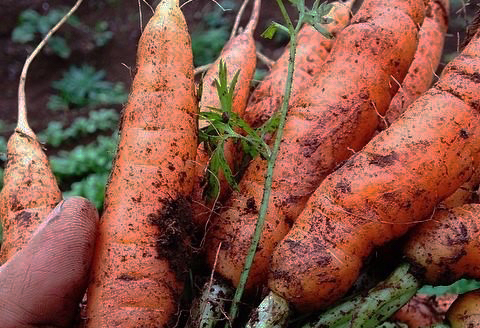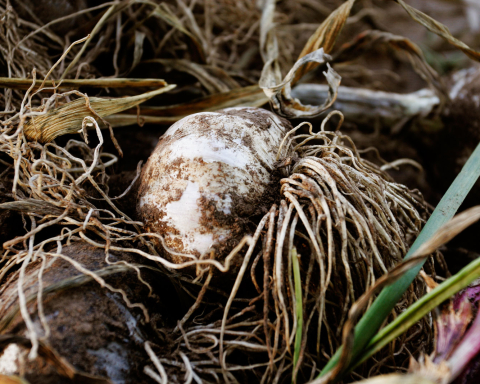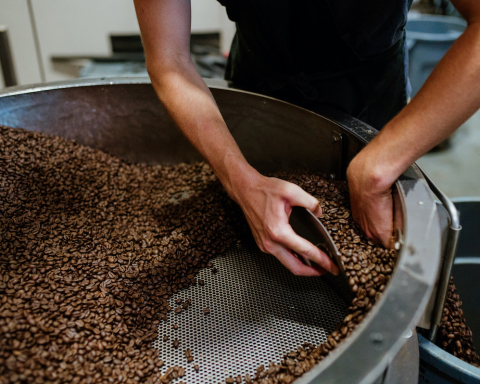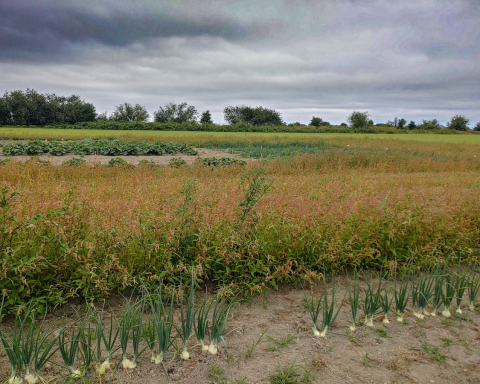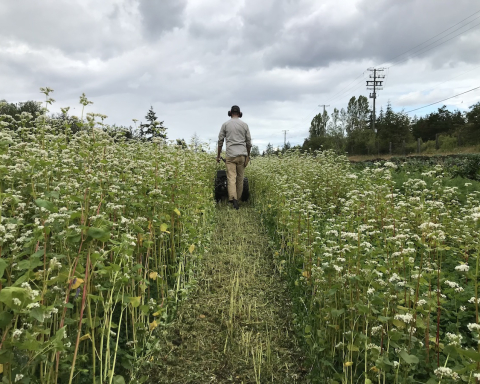By Anna Helmer
I am under more pressure than you might realize to produce another one of these articles called “Biodynamic Farm Story.” The problem is that my understanding of the concepts of Biodynamic farming is limited, and by now everyone must know that. I cope by dropping disclaimers to remind people to keep their expectations low (as I am doing now) and buying myself time to learn more. I keep writing about it because I think it is an important piece of the future of farming, and at my age you learn to take the soapbox when offered.
Ok. That’s done. Next, I am obliged to admit I have come out of winter having done minimal biodynamic professional development. In previous years, I have at least re-read the lectures or even attended some sort of learning opportunity. This year, the year we re-enter the certification process, I have done little more than the odd google search, focussing lately on this topic: “balancing earthly and cosmic forces in a long-rotation potato field.”
I can claim that I have been engaging in a more observational phase of learning, and that might be true, even if it isn’t solidly developmental. Happily, my observations have led to a flash of intuition, which is where I wallow now. In fact, I think I detect a Big Biodynamic Issue on our farm. It is my belief, and I must somehow turn this into cogent reasoning, that because we have been applying BD500 regularly, but not BD501, that something has gone out of whack, energetically. My main evidence is the recent struggles of the Sieglinde potato variety: the yield last year was not great, and the potatoes were overall smaller, although they maintained flavour.
I should have been expecting something big to happen. Every five years we plant potatoes in this field, and each time something pivotal and dramatic happens. One year, we had a huge wireworm problem, which led to the introduction of mustard into our rotation, and the subsequent death or disappearance of most wireworms. Another time, after spending a fortune on labour—the 1950’s Farmall 300 harvester fairly dripping with people in a desperate attempt to separate potatoes from dirt and haulm, half the crop falling off the back—we invested in the Grimme SE 75-30, the harvester of the century.
So, it should be no surprise that something thought-provoking would happen and that it would result in a change in farming practice. The big thing? The Sieglinde struggled. They never struggle. They have been reliable through thick and thin. But not last season. What happened?
What’s happened is cold springs transitioning suddenly to deliriously hot summers which meld into improbably hot autumns and precious little rain along the way. It’s been two years of this and although at any time the circumstances could change, I think the damage has been done. The soil is shocked. The Sieglinde are struggling. We’ve gotten the message, but we are not clear how to proceed.
Ponder, ponder. Reflect and ponder.
BD501 has been lurking around in the back of my mind all winter, ever since a Biodynamic farmer friend slightly raised an eloquent eyebrow when I admitted to never using 501. Not wishing to seem singular, and generally quite vulnerable to peer pressure, I saw fit to question 25 years of our farming practice. Why don’t we use BD501 again? BD500 has always been the preparation of choice, and I think it has done the job beautifully. Just the right amount of earthly energy to maintain vigour through the normally reasonably hot days of the July and August growing season. BD501, the bringer of light energy, has always seemed unnecessary. The sun seemed well able to provide the necessaries.
However, by not using BD501, we have perhaps failed to meet the challenge of the recent weather conditions: now we want more light in the cold springs, and incidentally a lot more grounding in the hot summers. I think when it’s this cold around planting time, the forces of cosmic energy that will draw the plant from the seed piece are stymied by the cold conditions. In the summer the more earthly, cool energy that draws the roots down may be weakened, dispersed, or disrupted by the shocking heat above. As Steiner talks about in the lectures, the plant lives between light and dark, cool and warm, the downward forces of gravity and the uplifting force of the cosmos: the soil mediates between the polarities. The tubers, living there in the soil, seem likely to be affected if the balance is off.
I really haven’t got this sorted out yet and there are some glaring issues with my theory: number 1 being that BD501 is meant to be misted onto the leaves of the plant and I think we need its power long before there are potato leaves upon which to mist; and interestingly, as a little aside, certain varieties are having no trouble whatsoever—the Red La Soda and Huckleberry Gold have been steadily stellar through all conditions.
I am sure I can do better than this, but in the meantime, as these cool, spring days lead inexorably to the first heat wave, we’re getting some BD500 on the potato and carrot fields, and for the first time ever following it with the BD501 before the potatoes are even up. There are lots of weed leaves available—perhaps they may suffice.
Anna Helmer farms in Pemberton and tries not to make too much up as she goes along.
Featured image: Curious cow at Bridge Creek Ranch. Credit: Maylies Lang.




